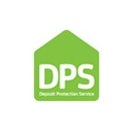Improving the energy efficiency of Britain’s housing sector is a top goal in the battle against climate change since housing contributes so much to the country’s carbon emissions.
The green mortgage sector in the UK appears to be primed for takeoff. Banks and building societies in the UK are introducing green mortgage solutions at an ever-increasing rate, encouraged by other innovations in this field.
Green mortgage solutions exist in many various shapes and sizes, but they all work to encourage homeowners to make investments in enhancing the energy efficiency of their homes.
Definition of a green mortgage
The Green Mortgage, introduced by Barclays in 2018, has gained popularity among high street lenders, and many companies now provide these. If a home buyer can show that the property for which they are borrowing complies with specific environmental criteria, a bank or mortgage lender will provide them favourable terms.
A green mortgage entails that the appropriate lender will recalculate the mortgage rate at a reduction after landlords can verify they have an updated energy rating for their property.
Benefits of a green mortgage for landlords
- Mortgages from a number of lenders, including Barclays, NatWest, TSB, and Virgin Money, may be purchased for less money.
- Cashback is useful for funding home upgrades; lenders that provide it include Nationwide and Virgin Money.
- Green mortgages may be a great incentive to improve the energy efficiency of your house, saving you money on heating costs while also being good for the environment.
- You are more likely to save money by choosing a green mortgage package when the mortgage markets are calmer.
Drawbacks of a green mortgage for landlords
- Green mortgages are not as widely offered, making them a little harder to find than a traditional mortgage.
- There is no single standard for green mortgages, meaning that lenders can have different requirements and criteria.
How to get a green mortgage
Eligibility criteria for a green mortgage varies from lender to lender, but the property’s Energy Performance Certificate (EPC) is typically a key factor. Homes are required to have an energy efficiency rating of 81 or above, or are in energy efficiency bands A or B.
Consider making the following upgrades to boost your EPC band:
- renewable energy installations, like solar
- window upgrades or replacements
- boiler improvements
- air source heat pumps installed
- putting up electric vehicle charging stations
Why are lenders involved with green mortgages?
Lenders are involved with green mortgages because they recognise the social and financial benefits of investing in energy efficient homes. By offering green mortgages, lenders are helping to reduce energy consumption, lower emissions, and increase the value of homes. Additionally, lenders can benefit from the potential tax incentives associated with green mortgages, as well as the increased demand for sustainable financing options.
Conclusion
Green mortgages can provide lower interest rates for borrowers who are investing in energy-efficient or environmentally friendly properties. Additionally, Landlords can use green mortgages to help them make a return on their investment.










